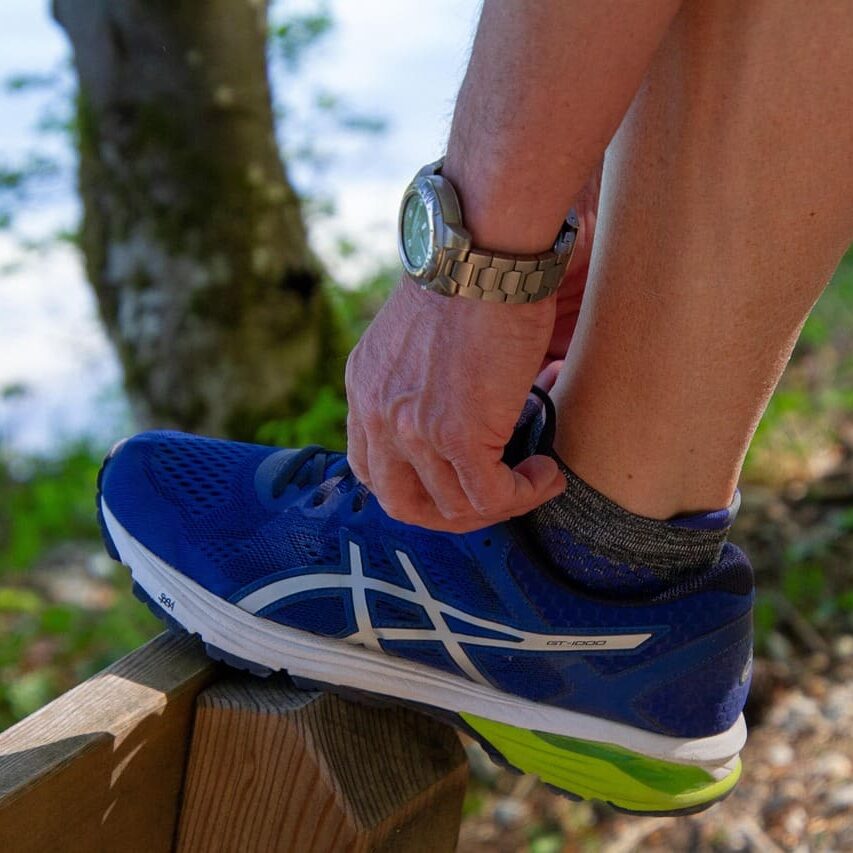Achilles Tendinopathy: The Endurance Athlete’s Slow-Burn Struggle
Achilles tendinopathy is a degenerative condition of the Achilles tendon, commonly affecting runners and triathletes.
Unlike acute ruptures, tendinopathy involves a chronic failure of the tendon to heal—often triggered by repetitive overload without adequate recovery. It manifests with pain, stiffness, and impaired performance, especially during or after training.
Increasing running training volume too quickly is an invitation for Achilles tendinopathy. Training volume includes duration, frequency, and intensity. Having a coach monitor your training progression can help avoid overuse injuries.
Risk Factors:
- Sudden changes in training load or surface (intensity)
- Inadequate recovery periods (frequency)
- Poor ankle dorsiflexion or calf strength imbalances (intensity)
- Older age or previous tendon injury
Diagnosis Essentials
Key signs:
- Localized pain at the Achilles tendon
- Thickening of the tendon
- Tenderness upon palpation
- Pain is worse when getting up in the morning or after sitting
If the symptoms are minor, they should not be ignored. Take precautions early before this becomes a chronic problem. If the symptoms are severe, are getting worse or not improving, seek medical care. A clinical exam can help determine the severity.
Treatment That Works
Skilled physical therapy can make sure you have a good treatment plan. The evidence is weak for individuals providing self-treatment. However, once you learn how to perform the rehabilitation exercises correctly, they can be easily incorporated into a home exercise program. The evidence supports:
- Eccentric loading: performing slow, controlled heel drops, from the edge of a step
- Isometric exercises: holding yourself up in a toe-raise position
- Progressive return to loading: reintroduce plyometrics or running gradually, after your walking gait and balance are normal
- Icing or contrast baths: after exercise for short periods
Medical Interventions:
- Avoid corticosteroid injections: the risk of rupture outweighs the benefit, and it is not a good treatment to get you through an event
- NSAID medications: may provide some relief, but do not improve healing, and should not be used if the pain is tolerable
- Modalities like shockwave therapy and dry needling may help stubborn cases, but are secondary
- Surgery is reserved for the most severe cases that do not respond to rehabilitation.
Mindset and Management
This injury demands patience. Most endurance athletes make the mistake of pushing too soon. Recovery isn’t passive—it requires active adaptation. You’ll rebuild stronger, but only if you respect the process.
Action Steps:
- Start eccentric heel drops—3 sets of 15 reps twice daily (pain-tolerable).
- Log your symptoms—track pain, stiffness, and performance weekly.
- Modify your training—swap out speed work for low-impact cross-training until symptoms stabilize. Avoid high intensity workouts such as speed work and plyometrics.
Takeaway
Achilles tendinopathy isn’t a career ender. It teaches you to train smarter, not just harder. Honor your tendon’s biology, and it will reward you with resilience. Recovery is a practice. Avoiding injury, and recovering from injury quickly are key to longevity in sport.
References
- Martin RL, Chimenti RL, Cuddeford T, et al. Achilles Pain, Stiffness, and Muscle Power Deficits: Midportion Achilles Tendinopathy Revision 2024 Clinical Practice Guideline. J Orthop Sports Phys Ther. 2024;54(12):CPG1-CPG32. doi:10.2519/jospt.2024.0302.
- Alfredson H, Pietilä T, Jonsson P, Lorentzon R. Heavy-load eccentric calf muscle training for the treatment of chronic Achilles tendinosis. Am J Sports Med. 1998;26(3):360-366. doi:10.1177/03635465980260030301.
- van der Vlist AC, Breda SJ, Oei EHG, Verhaar JAN, de Vos RJ. Clinical guidelines for Achilles tendinopathy: a systematic review. Br J Sports Med. 2021;55(20):1125-1134. doi:10.1136/bjsports-2020-103867.

Join Our Mailing List